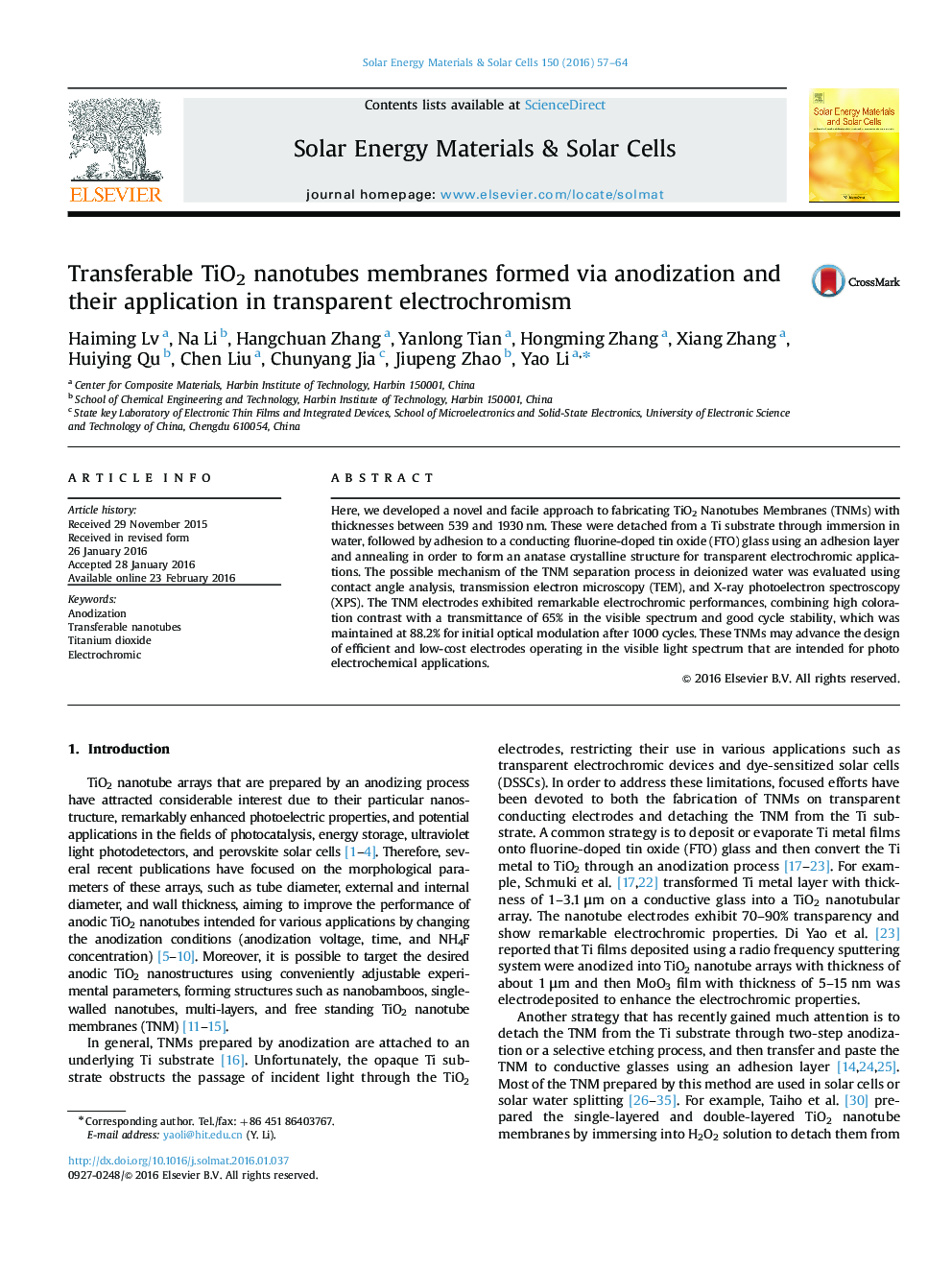| Article ID | Journal | Published Year | Pages | File Type |
|---|---|---|---|---|
| 77544 | Solar Energy Materials and Solar Cells | 2016 | 8 Pages |
•High quality TiO2 Nanotubes Membranes detached from a Ti substrate, followed by adhesion to conducting glasses.•The possible mechanism of TiO2 Nanotubes Membranes the separation process was discussed.•Electrochromic and electrical properties of TiO2 Nanotubes Membranes were investigated in detail.•The TiO2 Nanotubes Membranes electrodes exhibited high coloration contrast.
Here, we developed a novel and facile approach to fabricating TiO2 Nanotubes Membranes (TNMs) with thicknesses between 539 and 1930 nm. These were detached from a Ti substrate through immersion in water, followed by adhesion to a conducting fluorine-doped tin oxide (FTO) glass using an adhesion layer and annealing in order to form an anatase crystalline structure for transparent electrochromic applications. The possible mechanism of the TNM separation process in deionized water was evaluated using contact angle analysis, transmission electron microscopy (TEM), and X-ray photoelectron spectroscopy (XPS). The TNM electrodes exhibited remarkable electrochromic performances, combining high coloration contrast with a transmittance of 65% in the visible spectrum and good cycle stability, which was maintained at 88.2% for initial optical modulation after 1000 cycles. These TNMs may advance the design of efficient and low-cost electrodes operating in the visible light spectrum that are intended for photo electrochemical applications.
